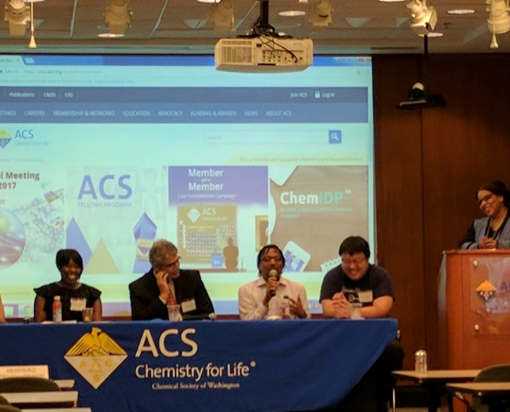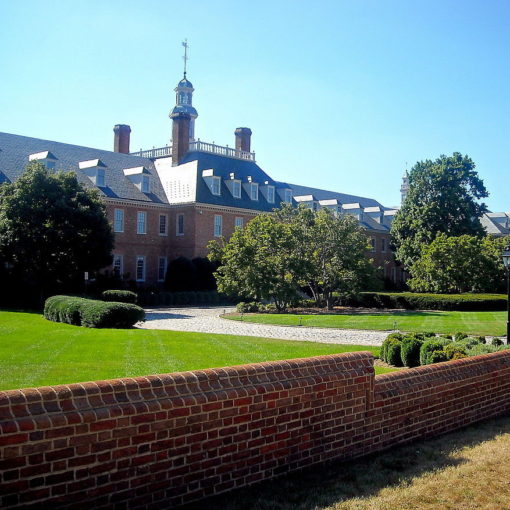 Born June 6, 1955 in London, England; Naturalized US citizen, Baltimore (1996). Education: BSc. in Biochemistry (1st Class Honors), University College London (1976); MD, University College Hospital Medical School, London (1979); PhD in Physical Biochemistry, MRC National Institute for Medical Research, London (1982). Positions held: House Physician, University College Hospital, London, U.K. (1979); House Surgeon, St. Charles Hospital (St. Mary’s Hospital Group), London, U.K. (1980); Member of the Scientific Staff of the MRC at the National Institute for Medical Research, London, U.K. (1980-1984); Head of the Biological NMR Group, Max-Planck Institute for Biochemistry, Martinsried, Germany (1984-1988); Senior Investigator, Laboratory of Chemical Physics, NIDDK, NIH, Bethesda (1988-present); Chief, Protein NMR Section (1991-present). Honors: Francis Walsche Neurology prize, University College Hospital Medical School, London (1977); Lister Institute Research Fellow (1982); Elected Fellow of the Royal Society of Chemistry (1990); Scientific Achievement Award (Biological Sciences) of the Washington Academy of Sciences (1990); Distinguished Young Scientist Award of the Maryland Academy of Sciences (1990); Elected Fellow of the Washington Academy of Sciences (1991); National Institutes of Health Director’s Award (1992); National Institutes of Health Lecture (1993); Dupont-Merck Young Investigator Award of the Protein Society (1993); The Harrington Lecture, National Institute for Medical Research (1996); Elected Fellow of the American Association for the Advancement of Science (1999); Original member, Institute for Scientific Information (ISI) Highly Cited Researchers Database, Biology and Biochemistry Section and Chemistry Section (2001); Elected Member, Lister Institute for Preventive Medicine (2003); Elected a Fellow of the Biophysical Society for “Pioneering contributions in the development of NMR spectroscopy for structural characterization of biological macromolecules” (2009); NIDDK Nancy Nossal Scientific Mentorship Award (2009); Elected a Fellow of the American Academy of Arts and Sciences (2010); Hillebrand Award of the Washington Chemical Society (2010).
Born June 6, 1955 in London, England; Naturalized US citizen, Baltimore (1996). Education: BSc. in Biochemistry (1st Class Honors), University College London (1976); MD, University College Hospital Medical School, London (1979); PhD in Physical Biochemistry, MRC National Institute for Medical Research, London (1982). Positions held: House Physician, University College Hospital, London, U.K. (1979); House Surgeon, St. Charles Hospital (St. Mary’s Hospital Group), London, U.K. (1980); Member of the Scientific Staff of the MRC at the National Institute for Medical Research, London, U.K. (1980-1984); Head of the Biological NMR Group, Max-Planck Institute for Biochemistry, Martinsried, Germany (1984-1988); Senior Investigator, Laboratory of Chemical Physics, NIDDK, NIH, Bethesda (1988-present); Chief, Protein NMR Section (1991-present). Honors: Francis Walsche Neurology prize, University College Hospital Medical School, London (1977); Lister Institute Research Fellow (1982); Elected Fellow of the Royal Society of Chemistry (1990); Scientific Achievement Award (Biological Sciences) of the Washington Academy of Sciences (1990); Distinguished Young Scientist Award of the Maryland Academy of Sciences (1990); Elected Fellow of the Washington Academy of Sciences (1991); National Institutes of Health Director’s Award (1992); National Institutes of Health Lecture (1993); Dupont-Merck Young Investigator Award of the Protein Society (1993); The Harrington Lecture, National Institute for Medical Research (1996); Elected Fellow of the American Association for the Advancement of Science (1999); Original member, Institute for Scientific Information (ISI) Highly Cited Researchers Database, Biology and Biochemistry Section and Chemistry Section (2001); Elected Member, Lister Institute for Preventive Medicine (2003); Elected a Fellow of the Biophysical Society for “Pioneering contributions in the development of NMR spectroscopy for structural characterization of biological macromolecules” (2009); NIDDK Nancy Nossal Scientific Mentorship Award (2009); Elected a Fellow of the American Academy of Arts and Sciences (2010); Hillebrand Award of the Washington Chemical Society (2010).
Exploring Sparsely-Populated States of Macromolecules by Diamagnetic and Paramagnetic NMR Relaxation
Abstract: Sparsely-populated states of macromolecules, characterized by short lifetimes and high free-energies relative to the predominant ground state, often play a key role in many biological, chemical and biophysical processes. We will summarize various new developments in paramagnetic NMR spectroscopy that permit these heretofore invisible, sparsely-populated states to be detected, characterized and visualized. In the fast exchange regime (time scale less than ~250-500 μs) the footprint of sparsely-populated states can be observed on paramagnetic relaxation enhancement profiles measured on the resonances of the major species, thereby yielding structural information that is directly related to paramagnetic center-nuclei distances, from which it is possible, under suitable circumstances, to compute a structure or ensemble of structures for the minor species. This will be illustrated with regard to (a) the search process whereby transcription factors locate their specific DNA target site among a sea of non-specific sites, (b) the characterization of encounter complexes in protein-protein interactions; and (c) the visualization of large scale interdomain motions.



